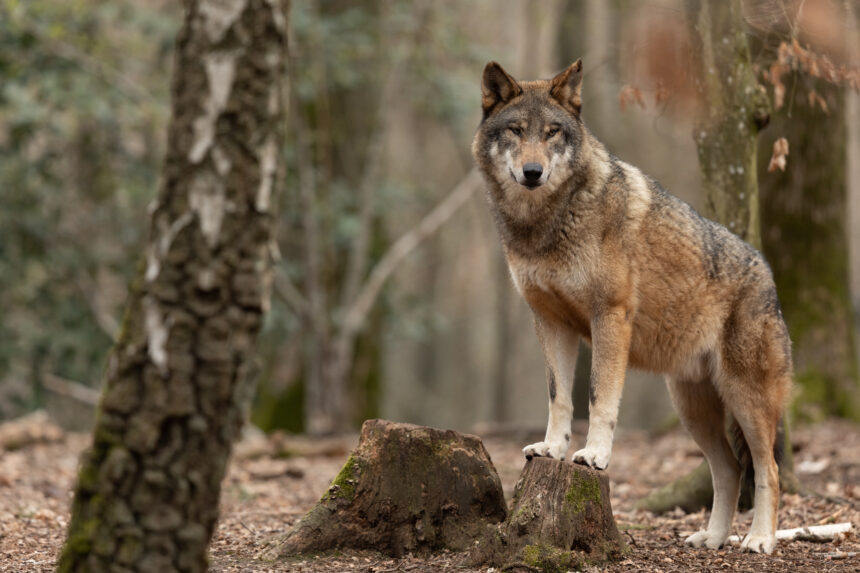While domestic dogs are far removed from their ancient ancestors, your furry friend may still harbor an inner wolf — just waiting to be unleashed. One glance at your pampered pooch might leave you doubtful, but you’d be surprised to learn how many common dog behaviors trace back to their wolf ancestry.
By recognizing and respecting your dog’s ancient instincts, such as their prey drive, you can strengthen your bond with your pet, redirect negative behaviors, and find appropriate ways for them to unleash their inner wolf.
Understanding prey drive: How to unleash your dog’s inner wolf
Wolves and other predators have a natural instinct called prey drive that compels them to find, pursue, and hunt prey animals. As we’ve established, domestic dogs are not wolves. However, they still have remnants of this prey drive, and understanding it is crucial to understanding your dog’s behavior.
There are five essential basic components of prey dive: search, stalk, chase, bite, and consume. Over the past 200 years or so, dogs have been selectively bred to emphasize various aspects of this instinct. For instance, bloodhounds exhibit strong “search” instincts, while “bite” behavior is more pronounced in breeds like terriers.
Though certain breeds might exhibit stronger instincts in one area, it’s important to note that all dogs possess some degree of prey drive. Understanding each component of the prey drive can provide valuable insights into your dog’s behavior and help you guide their inner wolf.
Search instinct
Dogs express their search instinct when they pick up an unfamiliar or enticing scent, hear something, or see a potential prey object. When something triggers this search instinct, dogs can become single-focused and fail to follow commands, letting their noses guide them.
How to direct it positively: Organize games and activities that encourage them to seek and find an object of desire, like a treat or toy. Hide bones or toys around the yard, or start teaching them the basics of tracking by leaving scent trails.
Take your dog (on leash) hiking or to the park, where they’ll experience many sounds, sights, and smells. The more you engage this instinct, the less your dog will be tempted to wander off or follow their nose into trouble.
Stalk instinct
When a dog stalks something they perceive as prey, they will crouch low and stealthily move toward their target, alert for any movement or sound, ready to pounce at the last second. Birds, squirrels, toys, or even people may trigger this stalking instinct. Though it is usually playful, you must provide appropriate outlets for this behavior to keep it from becoming problematic.
How to direct it positively: Toys such as flirt poles, feather teasers, or remote-controlled prey toys can mimic the movements of small animals, encouraging your dog to chase and pounce productively rather than destructively. Utilize these toys and be sure your pup gets plenty of regular exercise and playtime.
Chase
Chase is the natural progression after search and stalk. Dogs with a strong chase instinct may take off after quick-moving targets like cats, squirrels, rabbits, and even bicycles, often without heed to their owners. This can become incredibly stressful if your dog chases their perceived prey into the street or another dangerous environment.
How to direct it positively: Playing with your dog is one of the best ways to encourage and lead their chase instinct. Throw a ball or a frisbee, take them on a run, or start training them on an agility course. It’s also a good idea to practice recall so that your dog is more likely to heed your commands when their chase instinct is triggered.
Bite
Dogs bite for various reasons, including exploration, defense, playfulness, and prey drive. Some breeds bred for hunting, like Retrievers, will bring the prey object back to their owners, while others will proceed to consume, the final prey drive instinct.
How to direct it positively: Offer your dog a variety of chew toys to help them exercise their bite instinct in a non-destructive situation. You can also train them to control the force of their bite using gentle feedback like a yelp to communicate when your dog’s mouthing or biting becomes too rough.
Consume
Some dogs will move from biting to consuming, an instinct often expressed in their toy interactions. For instance, some dogs will methodically rip the stuffing out of a toy as a surrogate prey object. This desire to hunt and eat prey is deeply ingrained in certain breeds and isn’t usually an indication of hunger or underfeeding.
How to direct it positively: Provide plenty of durable toys for your pet and offer structured meal times so that your dog can learn to anticipate food. Encourage appropriate chewing behavior and remove any damaged toys from their reach to prevent choking hazards.
Embrace your dog’s wild side
Being a pet owner doesn’t mean training every instinct out of your dog. It means embracing their wild side, encouraging their instincts towards productive, positive behavior, and providing a safe environment for them to thrive.
In unleashing your dog’s inner wolf, you can ensure that your furry friend leads a happy, healthy, and natural life.






